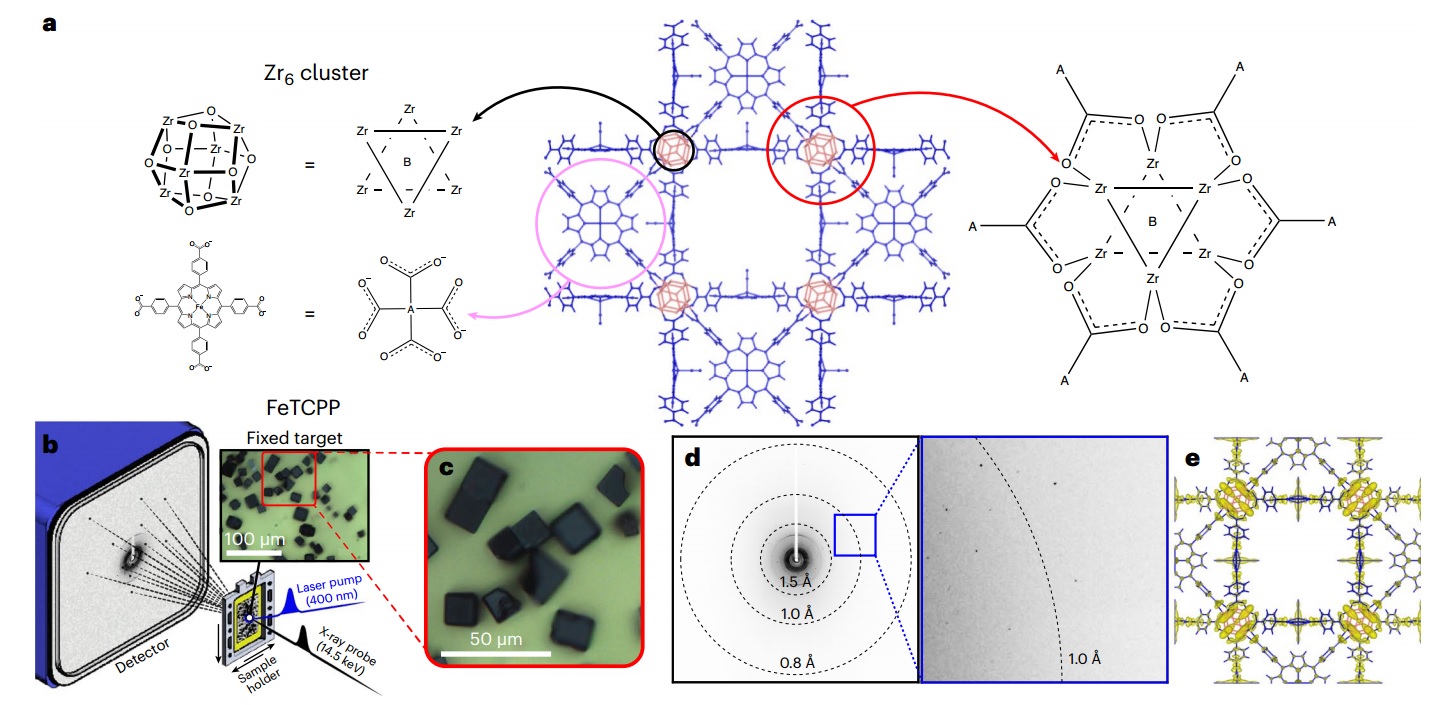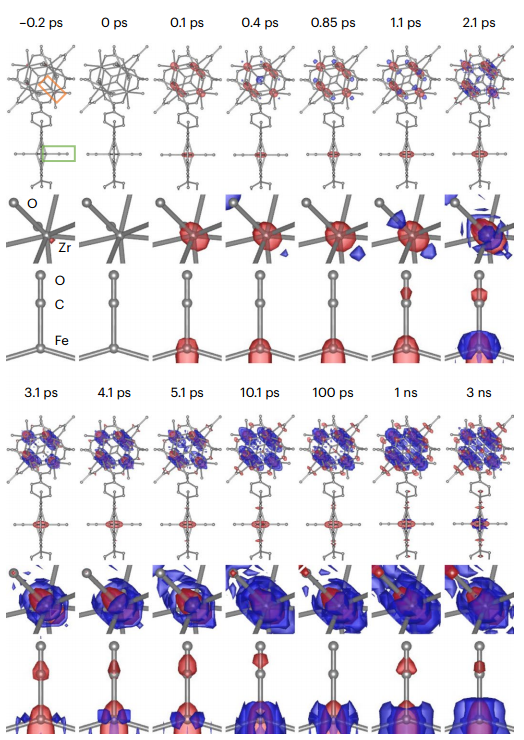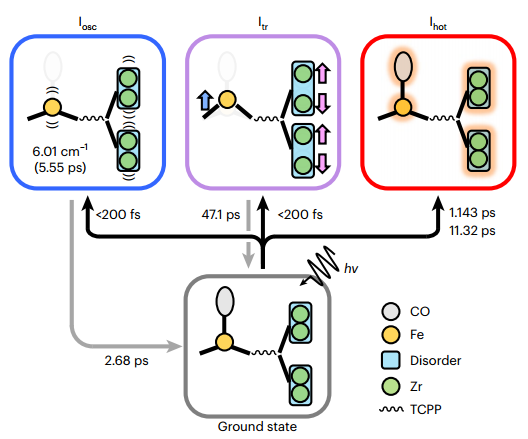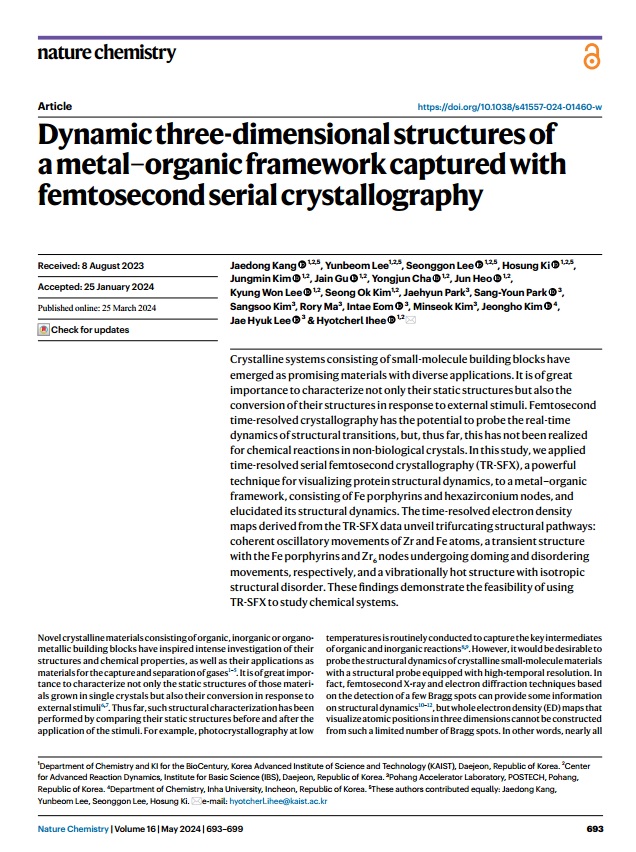Dynamic three-dimensional structures of a metal–organic framework captured with femtosecond serial crystallography
Posting date on solidfuturism: May 16th 2024
Published date: Jan 25th 2024
Authors: Jaedong Kang, Yunbeom Lee, Seonggon Lee, Hosung Ki, Jungmin Kim, Jain Gu, Yongjun Cha, Jun Heo, Kyung Won Lee, Seong Ok Kim, Jaehyun Park, Sang-Youn Park, Sangsoo Kim, Rory Ma, Intae Eom, Minseok Kim, Jeongho Kim, Jae Hyuk Lee & Hyotcherl Ihee
URL: https://doi.org/10.1038/s41557-024-01460-w
Abstract composer and editor: Seyed Amirhosein Mirsadri
Structural characterization of materials is crucial for understanding their behavior under external stimuli. Current techniques like photocrystallography provide static structures before and after stimuli application. However, there is a need for high-temporal resolution probes to study structural dynamics in small-molecule materials. Femtosecond X-ray and electron diffraction techniques offer insights into structural dynamics but are limited in constructing whole electron density maps. Enhancing the resolution of structural probes can provide a more comprehensive understanding of the dynamic behavior of crystalline materials. By improving the temporal and spatial resolution of structural probes, researchers can delve deeper into the dynamic transformations of crystalline small-molecule materials. This advancement could lead to a more detailed understanding of how these materials respond to external stimuli and pave the way for new applications in various fields. The study focuses on the dynamic three-dimensional structures of a metal-organic framework using femtosecond serial crystallography.

This technique allows for real-time visualization of structural transitions in response to external stimuli, providing insights into the dynamic behavior of the material. Therefore, Time-resolved serial femtosecond crystallography (TR-SFX) was employed to investigate a metal-organic framework composed of Fe porphyrins and hexazirconium nodes. Meaning that the dynamics of a porphyrinic MOF, PCN-224(Fe), were investigated using time-resolved crystallography. This MOF consists of Fe porphyrin building blocks connected through Zr6 nodes, with a CO ligand ligation. By capturing electron density maps at different time delays, the researchers were able to observe coherent oscillatory movements of Zr and Fe atoms, transient structural changes, and vibrationally hot structures within the framework. The study involves triggering a photo induced ligand dissociation reaction within the crystal and collecting data across 33 time delays to reveal structural changes.

Nonetheless, the experiment involved using a 400 nm femtosecond laser pulse to trigger a reaction in the crystal, followed by femtosecond X-ray pulses to obtain diffraction patterns. The results revealed trifurcating structural pathways within the metal-organic framework, showcasing dynamic movements of Fe porphyrins and Zr nodes. The study demonstrates the feasibility of using TR-SFX to study chemical systems, offering valuable insights into the structural dynamics of crystalline materials with potential applications in gas capture and separation. The crystallographic disorder of the Zr atoms in the Zr 6 nodes led to highly elongated features in the electron density maps.



klsjuidhfasdgh.png)
klsjuidhfasdgh.png)
klsjuidhfasdgh.png)
klsjuidhfasdgh.png)
klsjuidhfasdgh.png)

klsjuidhfasdgh.png)
klsjuidhfasdgh.png)
klsjuidhfasdgh.png)